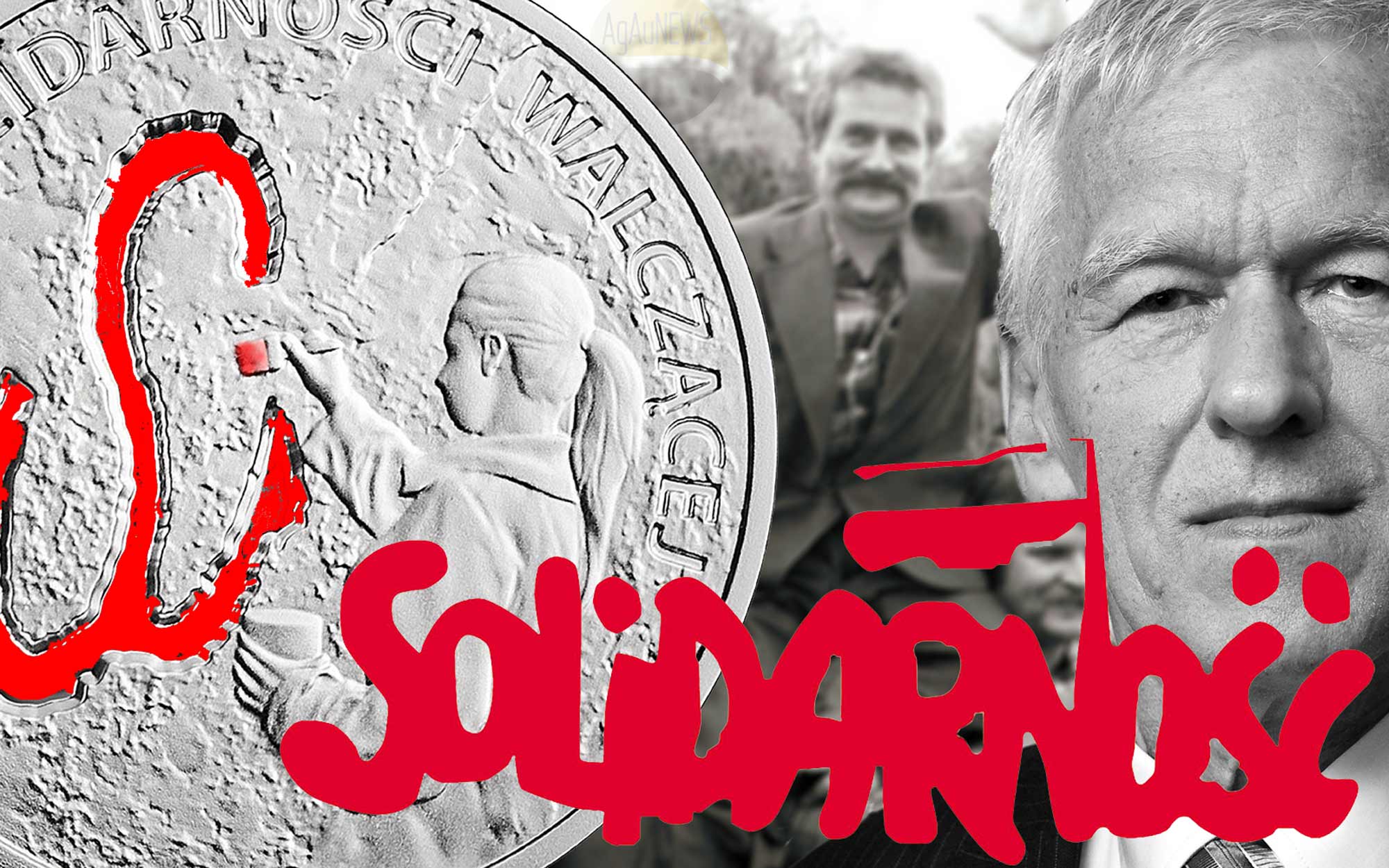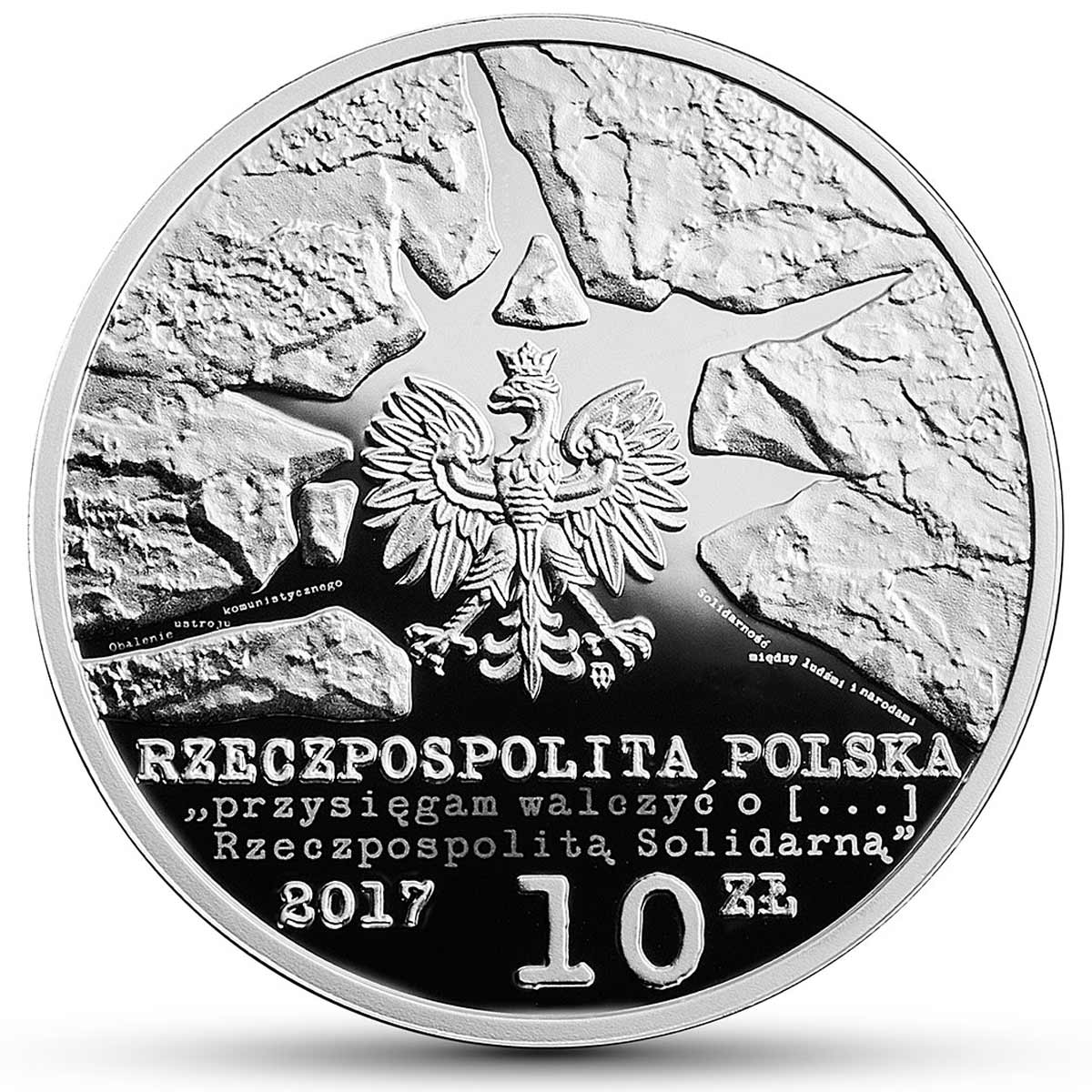Fighting Solidarity, the anti-communist social movement, marks 35 years with a new silver coin
It was back in 1982 that Fighting Solidarity was formed as a response to the de-legalization of Solidarity, the group formed in 1980, and government repression of the opposition after martial law was declared in 1981. Founded in June 1982 by Kornel Morawiecki, it was one of the more radical branches of the anti-communist movement, concentrating on information warfare, but continued to espouse non-violence.
The coin itself is of a typical format for the Narodowy Bank Polski, the National Bank of Poland. Struck in half a standard ounce of sterling 0.925 silver, it eschews any modification like colour or gilding, something the NBP does on occasion, but not commonly. The reverse by Jacek Jaśkiewicz depicts a female Fighting Solidarity member painting the groups symbol on a wall, a potent reminder of how the group disseminated its message through the country in some difficult times.
The obverse is by a different artist, this time Robert Kotowicz. It displays a stylised monolith cracked open to reveal the eagle emblem of Poland, along with words from the oath sworn by members of the organisation. It’s a striking image, helped by the bulk of the usual coin inscriptions being kept in one area away from the main design.
The coin will come packaged in the usual NBP box and include a certificate of authenticity. Mintage is capped at 20,000 units and will be available from Tuesday 13 June from the usual stockists.
FIGHTING SOLIDARITY, by founder member Kornel Morawiecki
Fighting Solidarity was the largest organization seeking the overthrow of the communist system and the restoration of independence of countries enslaved by Soviet imperialism. It was established in Wrocław in June 1982 and in a short time developed structures in all the regions and all the major cities of Poland. Already in 1983 Fighting Solidarity started printing underground publications in Czech and Russian, and the subsequently formed Eastern Division of this organization co-established freedom fghting centres in several republics of the Soviet Union. It was the only opposition group against which the interior minister of the Polish People’s Republic, General Czesław Kiszczak, issued orders “to use all available forces and means”.
Despite the involvement of civilian and military special services, the participation of the KGB and STASI in the struggle against Fighting Solidarity, and the numerous and frequent detentions of the people involved in the organization, it was never broken up or penetrated by the communist forces. Fighting Solidarity consisted of about three thousand sworn activists, and was supported by a much larger group of people actively helping in its activities. It published more than a hundred underground press titles, and its network of underground radio stations in dozens of Polish cities aired several hundred illegal broadcasts.
The organization had its own counter-intelligence structures ensuring the security of the conspiratorial work. Each member of Fighting Solidarity was not only a conspirator trained in this craf at underground courses, a printer familiar with various printing techniques, but also a “oneman printing house”, that is, a person capable of independently launching the printing of underground press in the most unfavourable circumstances and in conditions of minimal resources.
A large part of the activists of Fighting Solidarity were women, who played a huge role in the organization and exhibited extraordinary dedication. One of the many examples of their involvement is “Wiadomości Bieżące” (Current News) – a conspiracy newspaper, created mainly on the initiative of women. It was printed for 8 years in circulations reaching several thousand copies. A total of 242 issues were published. Like many other publications of Fighting Solidarity, it functioned thanks to extensive networks of underground printing and distribution points. This structure was also a great school of practical skills utilized to break the state’s monopoly on information. One of the leaders of this school – Barbara Sarapuk – was named the “Queen of Underground Print”, because she trained the largest number of printers in the entire underground publishing movement.
The symbolism contained on the obverse of the coin reminds us that the Polish nation made a great contribution to the destruction of the concrete wall of Communist enslavement and played a fundamental role in the overthrow of the post-Yalta world order. The obverse depicts a cracking monolith that is shattered by the emblem of the Polish State. In the cracks we see the words from the programme and the oath sworn by the members of Fighting Solidarity. The reverse presents a stylized silhouette of a woman painting the organization’s symbol.
SPECIFICATION
| NAME | 2017 35TH ANNIVERSARY OF FIGHTING SOLIDARITY |
| DENOMINATION | 10 Zloty |
| COMPOSITION | 0.925 silver |
| WEIGHT | 14.14 grams |
| DIAMETER | 32.00 mm |
| FINISH | Proof |
| MODIFICATIONS | None |
| MINTAGE | 20,000 |
| BOX / COA | Yes / Yes |






Leave A Comment